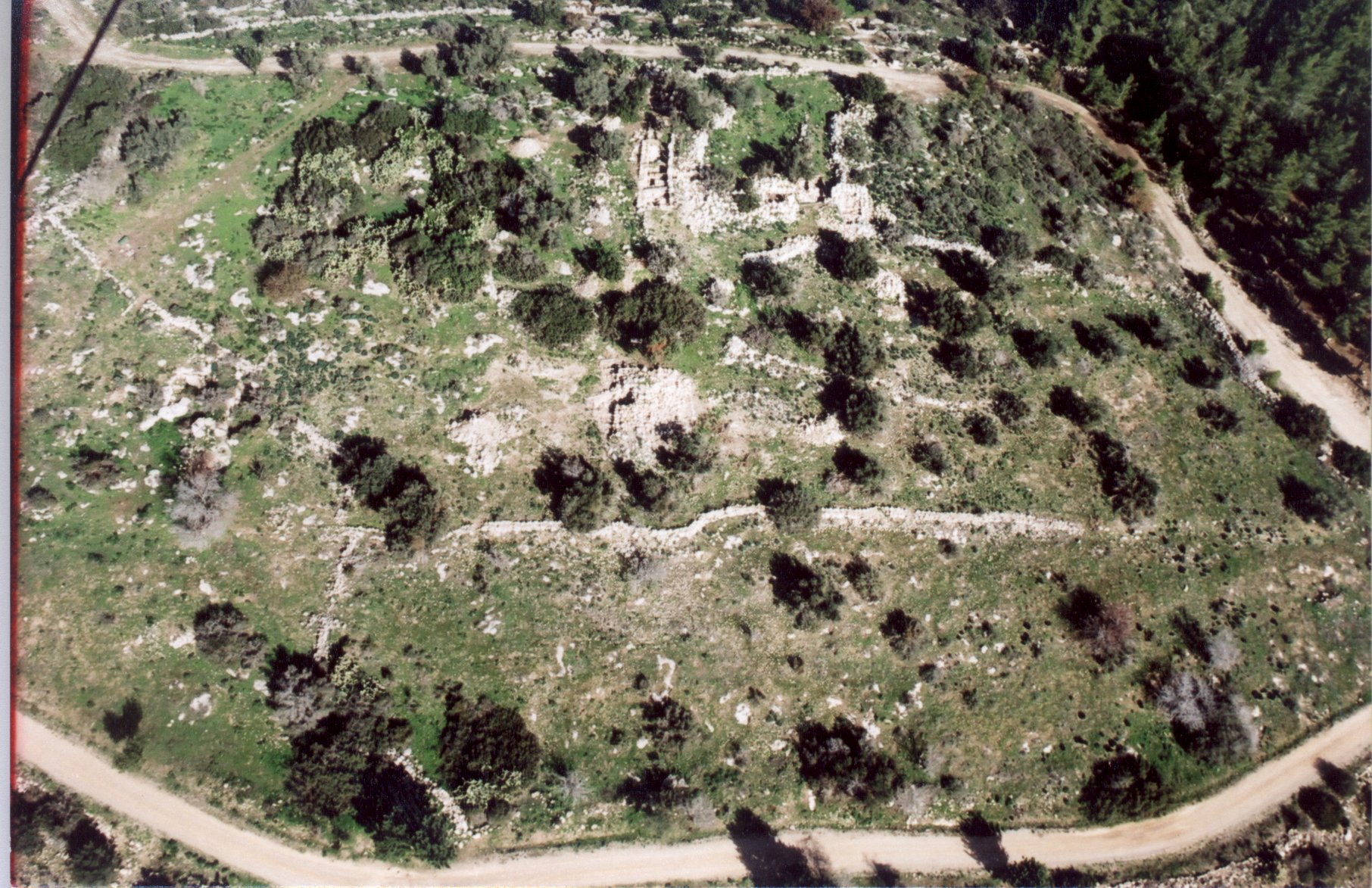
The western part of the large structure was especially well preserved, and it was there that the excavations focused. The structure's western wall (W1), built from two faces of fieldstones, was exposed almost to its full extent, including the southern and northern corners. Four meters east of this wall was a row of monolithic pillars (W4), some standing, while other are fallen. W1 and the pillars were connected by several walls built of nari stones or chalk blocks. Next to one of them (W15) was a semicircular installation. In some of the squares, bedrock was reached.

The function and date of the large structure are unclear. Its architectural character suggested that it was built at the Iron Age (like the structure at Kh. Abu e-Twein, and others), but all the finds hitherto discovered in the rubble, underneath the floors, and above the bedrock date to the Hellenistic period.
During the 2000-1 seasons, excavations were conducted also in the eastern part of the central building and to its south. In the western part of the building parts of rooms, situated near the entrance to the building, were uncovered, but the floors have not been reached yet. To the south of the main building, a large stone structure was exposed, built like stairs. It function is not clear, but it probably dates to the Hellenistic period. In addition, a complex of caves, including a hiding cave from the Bar Kokhba revolt, was partially exposed, and a large collumbarium was studied.
Note: The excavation was directed by Avraham Faust and Adi Ehrlich, with the assistance of R. Sagir (area supervisor), D. Behar and J. Rosenberg (survying), A. Ackerman (geomorphology), M. Waldman (pottery drawing). Also participating in the excavations were students from Bar-Ilan University, youth in the framework of national service of the JNF and the Trailblazers of the JNF. Eli Shenhav, the JNF archaeologist, was of great assistance in the preparation of the excavations.